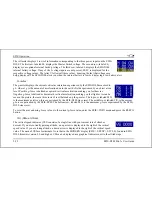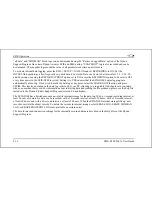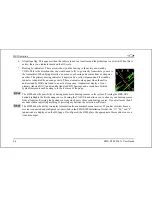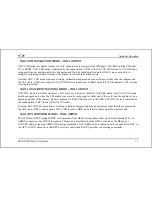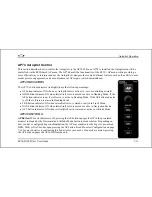
HSI Operation
EFIS-D100 Pilot’s User Guide
6-9
When the HS34 is hooked to a GPS unit via ARINC-429, the system can read the scaling from the ARINC-429
connection. When connected this way, the scaling auto-updates and follows the GPS. The indication on the
screen for mode and range should match the mode and range of the GPS at all times. When in this mode, the
range is not limited to just 5/1/0.3nm, as the GPS may slide between scales, so it would not be unexpected to
see a number such as 0.8 on the screen. Because of this behavior, on the final phases of an approach, a GPS
hooked to the HS34 via ARINC-429 acts much like a VOR receiver would with the CDI acting as angular
deflection, not linear distance. There are still only three master modes of Enroute, Terminal, and Approach,
which are annunciated on the screen.
8.
Track indicator. This indicates your direction over the ground as reported by the GPS. This is
different than your magnetic heading when there are crosswinds present. Since this is your
actual ground track, keeping this directly above your course pointer (when the CDI is centered)
keeps you on course, even if your magnetic heading is different. As long as a valid GPS source is detected by
the system, the ground track indicator can be displayed. This is not dependent on the currently set NAV source.
HSI Menu Structure
NAVSRC - This is used to choose what navigation source is displayed on the HSI page and the EFIS main page.
Pressing this button steps through the three options: DG, NAV, and GPS. This button cycles through only the overlays
that are available in the system; NAV or GPS pages are not available if these data sources are not hooked up.
The NAV SRC button on the HS34 performs the same function as this NAVSRC menu button, but may cycle
through NAV1, NAV2, etc, if you have multiple units connected. The NAV SRC button on the HS34 only
works when the HSI page is displayed on the DSAB master. If it is pressed when no HSI is displayed, it has no
effect.


